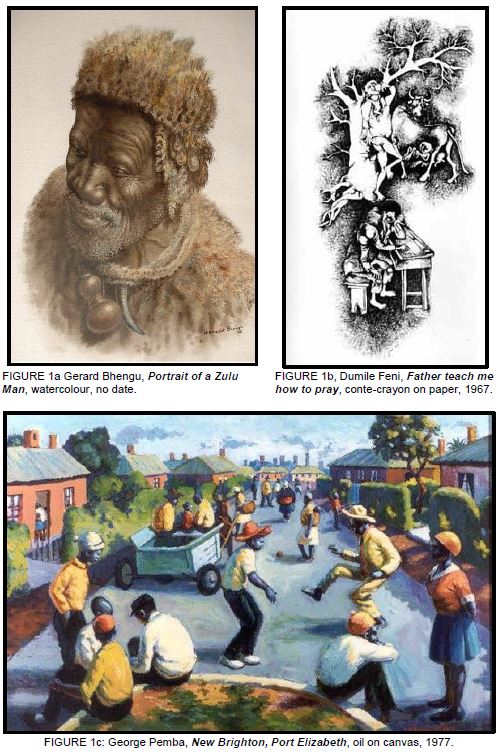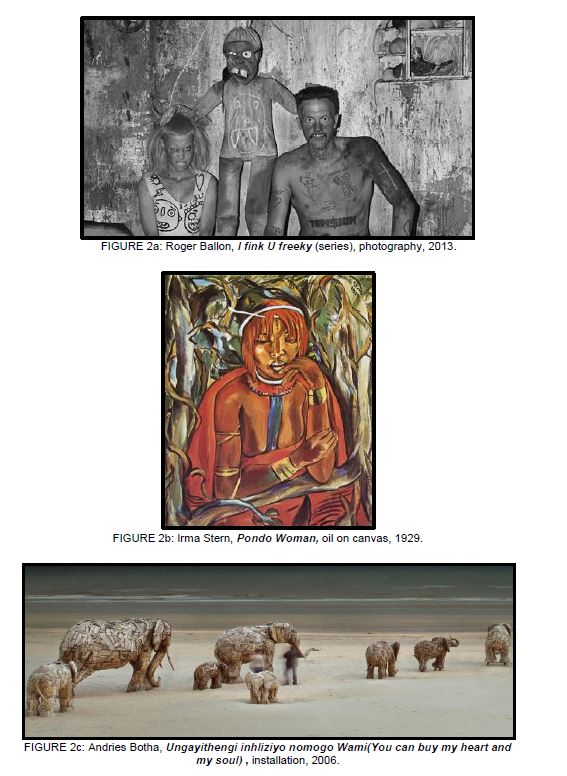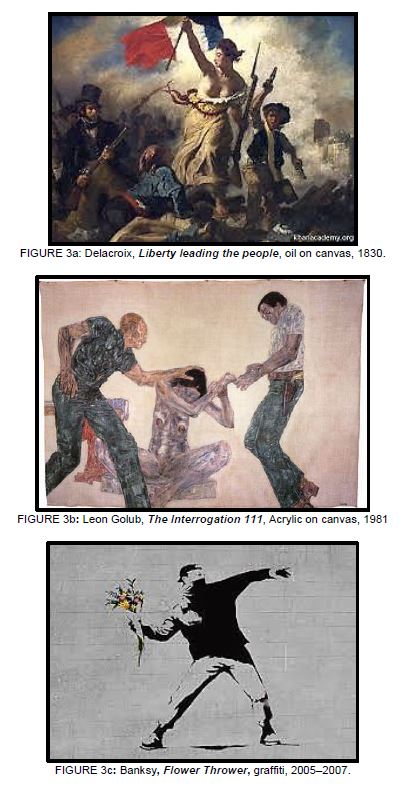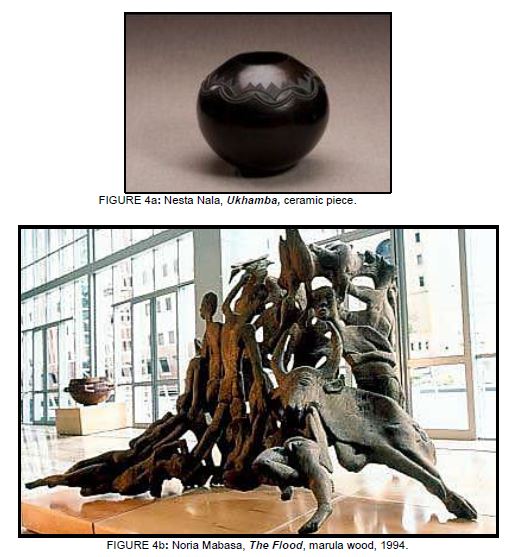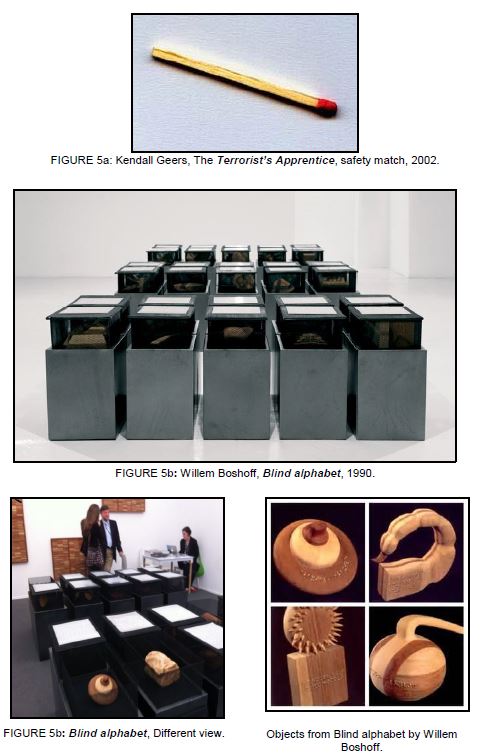VISUAL ARTS PAPER 1 GRADE 12 QUESTIONS - NSC PAST PAPERS AND MEMOS SEPTEMBER 2016
Share via Whatsapp Join our WhatsApp Group Join our Telegram GroupVISUAL ARTS
PAPER ONE (P1)
GRADE 12
EXAM PAPERS AND MEMOS
SEPTEMBER 2016
INSTRUCTIONS AND INFORMATION
It is expected of you in this examination to demonstrate the following:
- The use of the correct art terminology.
- The use and implementation of visual analysing and critical thinking.
- Writing and research skills within a historical and cultural context.
- The placement of specific examples within a cultural, social and historical context.
- An understanding of characteristics/different creative styles.
Read the following instructions before deciding on which questions to answer:
- This question paper consists of EIGHT questions.
- Answer any FIVE questions for a total of 100 marks.
- Questions and sub-sections must be numbered clearly and correctly according to the numbering system used in the question paper.
- Questions appear on the left-hand pages, with visual sources on the right hand pages.
- Ensure that you refer to the visual sources reproduced in colour where required.
- Information already discussed in one question, will not earn marks if repeated in other answers. Cross reference of works of art is allowed.
- Name the artist and the title of each work of art which you discuss in your answers. Underline the title of the work of art or the name of a building.
- Write clearly and legibly.
- Write in a clear, creative and structured manner, in full sentences and paragraphs, according to the instructions for each question. Bullets are not acceptable, and act only as guidelines in your essay structuring.
- A list of facts/table will NOT be accepted. Use the following guidelines for the length of your answers.
Note the mark allocation:
6–8 marks: a minimum of ½–¾ page (paragraph)
10–14 marks: a minimum of 1–1½ pages (short essay)
20 marks: a minimum of 2 pages (essay)
GLOSSARY
Use the following vocabulary to ensure that you understand how to approach a specific question:
Aesthetics: Theory of beauty and art and the understanding of beautiful things.
Analyse: A detailed and logical discussion of the formal elements, such as line, shape, space, colour, tone, format and composition of the art work.
Compare: Point out differences and similarities in an ordered sequence within the same argument.
Contextualise: Relating to, or depending on the framework of information; relating to the situation, time (era) and location to which the information belongs.
Discuss: Present your point of view and give reasons for your statements.
Explain: Clarify and give reasons for your statements.
Interpret: Analyse and evaluate (give an informed opinion) an art work. Contextualise it historically, culturally, socially, etc. and substantiate your findings by referring to similar specific examples.
Evaluate: Showing insightful and analytical commentary, as to the comparative worth of an art work, in the broad world picture.
Justify: To support/motivate with proof or witness. Substantiate: To motivate with proof/supporting evidence.
State: Give exact facts and say directly what you think – give your opinion, as well as an explanation.
Visual sources: The visual images which are supplied in the question paper.
QUESTIONS
QUESTION 1
THE VOICE OF EMERGING ARTISTS
| During the early and mid-twentieth century Black and White South African artists struggled to obtain formal art education but despite this, the then upcoming artists produced works of good quality, many of which are commenting on the daily lives of the communities within which they lived. |
1.1 Choose TWO artworks from FIGURE 1a, FIGURE 1b and FIGURE 1c and in separate paragraphs explain how the artists produced work that reflects a commentary on the daily lives of the communities within which they lived.
Refer to the following:
- Composition
- Application of art elements
- Medium and technique
- Evident influences on the styles
- Lifestyle atmosphere (10)
1.2 Choose TWO well-known Black South African artists you have studied whose work delivers social/economic commentary and in 1 to 1½ pages discuss ONE work of each artist.
Your discussion must include the following:
- Names of artists and works
- Inspiration and influences in their work
- Subject matter
- Composition, technique and style
- Evaluation of success of the work as a commentary (10)
[20]
QUESTION 2
SOUTH AFRICAN ARTISTS INFLUENCED BY AFRICAN AND/OR INDIGENOUS ART FORMS
| For centuries artists around the world have been influenced by African and other indigenous art forms, be it landscapes, deity figurines or primitive masks. This has led to emergence of new styles like Cubism and Urban art to name a few. |
2.1 With the above in mind, write a short essay of two paragraphs in which you anlyse and interpret FIGURE 2a and FIGURE 2b to show how each of the artists has succeeded in capturing the essence of Africa in a different context.
Refer to the following:
- Media and technique
- Composition
- Symbols
- Colour
- Subject matter (8)
2.2 Refer to FIGURE 2c. Discuss Andries Botha’s work with specific focus to the following:
- Application of formal elements of art
- Theme/message
- Mood as related to Africa (6)
2.3 Choose ONE work (other than works that appear in this question paper) by a South African artist that reflects African/Indigenous influence and in at least ½ a page analyse and evaluate the extent to which it reflects this influence by referring to the following:
- Name of artist and title of the work
- Application of formal elements of art
- Theme/message
- Mood as related to Africa (6)
[20]
QUESTION 3
SOCIO-POLITICAL ART – INCLUDING RESISTANCE ART
| There has always been a strong relationship between art and politics. During times of political unrest, artsists tend to use art either as a vehicle of promoting their propagandist views or as an expression of the oppression/repression of those views by those in authority. |
3.1 Write an essay of about one page in which you prove the above statement true by analysing FIGURE 3a, FIGURE 3b and FIGURE 3c with reference to the following:
- Hisorical context and subject matter
- Use of formal art elements and composition
- Materials and techniques
- Message or meaning. (10)
3.2 Choose TWO artworks which you have studied that deliver a socio-political message and (in two paragraphs of at least half a page each) write an essay on each in which you include the following:
- Name of artist(s) and title of the work
- Subject matter/issues adresssed by artist
- Media and technique
- Application of art elements
- An evaluation of the artist’s success in delivering his message. (10)
[20]
QUESTION 4
ART, CRAFT AND SPIRITUAL WORKS MAINLY FROM RURAL SOUTH AFRICA
Immediately, with the phrase ‘African craft’ one enters into the realm of what is art and what is craft? A never-ending discourse that will, one suspects, continue to be agitatedly discussed forever. |
4.1. With reference to the statement above, analyse and interpret the given FIGURE 4a and FIGURE 4b by writing an essay of 1½ to 2 pages. In addition also choose ONE artwork of your choice and ONE craft piece (from a rural area) of your choice, to explain when an object can be classified as art. Refer to the following in your essay:
- Elements of art
- Functionality
- Mediums
- Traditional use
- Religious and spiritual elements
- Titles
- Subject matter
Marks will be allocated as follows:
- 3 Marks for introduction which deals with your views on the question.
- 6 Marks for insightful commentary on the four artworks.
- 1 Mark for very short conclusion.
[20]
QUESTION 5
MULTI-MEDIA AND NEW MEDIA – ALTERNATIVE CONTEMPORARY AND POPULAR ART FORMS IN SOUTH AFRICA
Multimedia artists makes use of elements that “speak” to all five senses. Traditionally in classical art only the sense of sight was invoked. |
5.1 With reference to the above statement and visual source, FIGURE 5a. Write a paragraph (at least ½ page) in which you discuss the above statement by considering the following: (4)
- The medium used
- The message of the artwork
5.2 Also with reference to the above statement analyse and discuss FIGURE 5b in essay format (at least ½ page). Consider the following:
- Application of art elements and principles
- Mediums relevant to the concept
- Meaning or message (6)
5.3 For this question you may not use a work which appears in this question paper. However, you may use a different work by one of the artists used in this paper.
In essay format, of at least one page, recall, discuss and compare at least TWO works in multimedia which you have studied, substantiating each of the following:
- Name the work/s as well as the artist
- Media
- Messages and/or meanings
- Influenced by which style of art
- Presentation (10)
[20]
QUESTION 6
POST-1994 – DEMOCRATIC IDENTITIY IN SOUTH AFRICA
| Post-Apartheid visual art made definite contributions with regards to the integration and emancipation of different races in South Africa. This led to a believable, contemporary South Africa in which artists could once again focus on reviewing their own identities. |
6.1 Write an essay of about ¾ of a page in which you discuss how the individual artists of the visual sources of FIGURE 6a and FIGURE 6b relate to expression of identity.
Refer to the following:
- Mediums used
- Style and technique
- The commentary these artists make
- Which one makes the strongest impact, with reasons for your choice (8)
6.2 Write an essay of at least 1½ page, discussing the work of any TWO South African artists you have studied, who question and reflect on their post-1994 identity. Refer to specific works of art in you answer, which do not appear on this question paper. (12)
[20]
GLOSSARY |
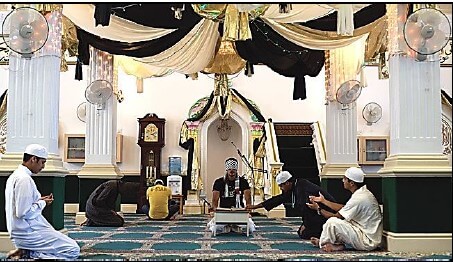 FIGURE 6a: Hasan and Husain Essop, Five Pillars, photograph, 2008. |
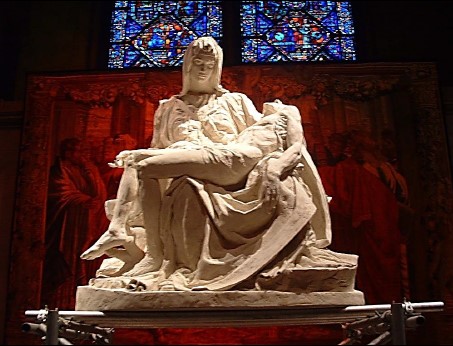 FIGURE 6b: Wim Botha, Mieliepap Pieta, resin and mieliepap, 2004. |
QUESTION 7
GENDER ISSUES – MASCULINITY AND FEMININITY
| Since the Renaissance era the female body has been the prime subject matter for many artists, most of them male. In later centuries female artists use the female form, but not to portray the stereotypical idea of women. |
7.1 With reference to the above statement and referring to FIGURE 7a and FIGURE 7b write an essay of approximately ¾ page in which you explain and discuss how the female form is represented by the contemporary female artist.
Consider the following:
- Composition
- Style
- Formal elements of art
- How gender is questioned/affirmed (8)
7.2 Write an essay of approximately 1½ page, on any TWO artists you have studied, in whose works male and/or female identity is addressed. Name, describe and compare the works. Conclude your essay discussing the impact of each. (12)
[20]
GLOSSARY |
 FIGURE 7a: Jenny Saville, Propped, oil on canvas, 1992. |
 FIGURE 7b: Mary Sibande, Red dogs, Installation, 2014. |
QUESTION 8
ARCHITECTURE IN SOUTH AFRICA
| Magnificent examples of ground-breaking architecture have come out of the 20th and 21st centuries. Buildings that have been innovatively and environmentally designed are evident in many parts of the world. |
8.1 Considering the above-mentioned, study the images of the innovative structures each relevant in their own time FIGURE 8a and FIGURE 8b. Write an essay of one page, in which you evaluate the innovative accomplishments.
You may include thoughts on the following:
- Principles of design applied
- Influences and creative thought
- Peculiar characteristics
- Aims and effective functionality (8)
8.2 In an essay of approximately 1½ pages, clearly analyse TWO buildings by any popular contemporary South African architect/s. Discuss the shapes, materials and design which place them in a category of outstanding impact.
The following aspects may well be relevant:
- Names of architects/companies and buildings
- Special features
- Peculiar materials, technology and design
- Ecological considerations
- Environmental issues
- Functionality (12)
[20]
GLOSSARY |
 FIGURE 8a: Revel Fox and Partners, Cape Town Convention Centre, 2008. . |
 FIGURE 8b: House of Rhino, Crossways, self-sustainable eco-friendly house, 2011. |
TOTAL: 100
